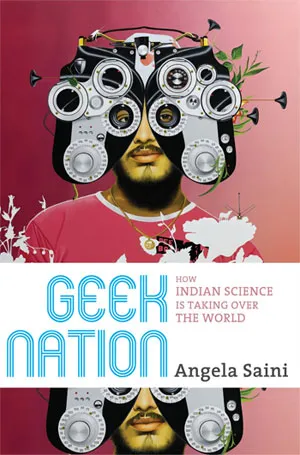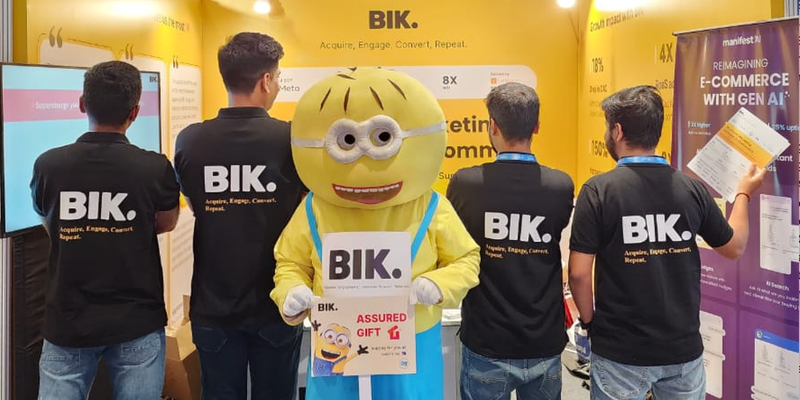[Book Review] Geek Nation: How Indian Science is Taking Over the World

9 chapters; 288 pages
2012: Hodder/Hachette (Amazon)
This highly readable book is a combination of science journalism and travelogue, addressing one of the most interesting questions of the 21st century: how will one of the world’s oldest civilizations balance its deep traditions with modern science, and emerge with game-changing innovations? “India was one of the most powerful scientific nations of all,” says the author, and it may even be “the birthplace of the geek.”
India is a nation of “geeks, swots, nerds, dweebs, boffins and dorks,” the book begins. Almost one in five of all medical and dental staff in the UK is of Indian origin, and one in six employed scientists with science or engineering doctorates in the US is Asian. By the turn of the millennium, there were even claims that a third of all engineers in Silicon Valley were of Indian origin, with Indians running 750 of its tech companies, according to the author.
Angela Saini is a science journalist who has written for the BBC, the Economist, New Scientist, Science, and Wired, and has been an invited speaker at Columbia University, Google, and Newswomen's Club of New York. She was named European Young Science Writer of the Year in 2009, and her Web site provides links to her blogs. Her father was an engineer from India and she grew up in the UK, thus giving her unique perspectives blending east and west.
In the 21st century, people have started asking whether Asian countries like India will become powerful economic giants once more, reclaiming the scientific and technological legacy they lost.
The book raises a number of interesting questions in this regard. How is it that a poverty-ridden country like India could send rockets to the moon and build a powerhouse IT industry? Where does astronomy end and astrology begin in the Indian tradition? How do Indian scientists blend science in professional life and tradition in personal life? What effect did colonial rule have on Indian attitudes towards science, heritage and power?
The book is based on a series of interviews conducted by Saini with a range of engineers, entrepreneurs and young scientists in India, and goes beyond the facts and figures which are the usual case in comparative statistical studies. But the second part of the book’s title is very misleading, there is nothing about global takeovers here (a good example of how publishers should *not* position a book).
I have summarized some of the issues raised in the book in a thematic manner in Table 1, but the chapters are more lively of course in describing the profiled institutes and the insightful conversations and debates about science and innovation.
Table 1: Geek Power: Opportunities and Challenges
Science and engineering were thankfully high priorities of post-independence India, and the seeds were sown for space and technology education institutes. But the initial change was slow and poverty continued to be widespread, leading to massive brain drain – only in the past couple of decades has this trend reversed, and India is now “kitted out for battle in the coming technological age.”
“The rate at which India has managed to amass space expertise has come as somewhat of a surprise to the rest of the world. But the biggest shock of all has been how it has managed to do everything so cheaply,” says Saini; some estimate that India’s space budget is only three percent of NASA’s budget.
Competitively, India fares poorly in the Olympics, and seems better suited for thinking games like chess or hand-eye sports like archery. In fact, the science Olympiad programs seem to get more Indian media coverage than the Olympics! But unfortunately many Indian teenagers seem to give up their entire childhoods to exam revision, rote learning and tutoring; more emphasis is needed to encourage out of the box thinking and creativity.
More infrastructure is also needed for higher educational institutes; the Indian government’s spend on all the IITs is equivalent to just 8% of the annual budget of MIT in the US! The curriculum needs more of a blend of humanities perspectives, but many students seem more interested in passing exams and getting high-paying jobs, thus leading to ‘technological dystopia.’
By 2015, Indian IT companies will be making at least $12 billion per year. Indian IT companies have raised the aspirations of youth – but do not spend as much on R&D as their global counterparts, and are still focusing on ‘frugal innovations.’ But perhaps this will lay the foundation for future cadres of inventors, says Saini, drawing parallels to 1970s Japan.
However, some students and employees take on hobbies and entrepreneurship seriously, and ‘Generation Why’ is experiencing and leading the liberalisation of thought. “This is the generation that promises to change Indian technology companies from the backroom maintenance outfits that they are now into innovative powerhouses,” observes Saini. IIT Bombay’s annual TechFest is a good example of how the young generation rallies around technology, and the International Robot World Cup was recently held in Bangalore as well.
Thanks to India’s vast scale, even a small percentage of techies who become innovators and entrepreneurs can transform India’s fate -- as cities like Bangalore are showing, with a large pool of engineers and designers and a good ecosystem for entrepreneurs with lots of meetups.
Indian IT contributions in the US are well documented (eg. Hotmail, USB), and in local offices of MNCs (eg. IBM’ Spoken Web). The author highlights TringMe as an example of a startup which has a successful Web-to-voice product.
On the health front, traditional ayurvedic knowledge has withstood the tests of time and science and is not just absorbed in local life but also used by drug MNCs (eg. neem, turmeric). But in other areas there is a “bizarre mix of science, religion and pseudo-science” – such as claiming that all modern scientific achievements were also present in Vedic science. Perhaps this is “aggressive defensiveness about India” due to colonization and globalization? Organizations like the Indian Rationalist Association are trying to promote critical thinking and debunk bizarre practices, superstitions and views passed off as science.
One chapter profiles Lavasa, a futuristic resort city in the Western Ghats near Pune. “This may be India’s first city designed for Generation Y. It’s a geek’s paradise. And not only will the geeks live here, the geeks will rule,” says Saini.
Interestingly, a country as bureaucratic and corrupt as India has also become one of the world’s largest showcases of e-government technology and services (eg. Common Services Centres, rural kiosks, land records digitisation, courtroom workflow, biometric IDs). “It’s happening here faster than in many other more developed nations,” observes Saini. “Can the old babu raj really be abolished by the geeks or will it divide India down the middle?” asks Saini, wondering about a new digital divide.
On the pharmaceutical front, India’s support of Open Source Drug Discovery is probably inspired by the Asian cultural view of holistic medicine – as compared to the “scientific fortresses” of drug MNCs. The collaborative kind of medical research requires both IT as well as lab experts. “Luckily, India has plenty of both,” observes Saini.
India’s Institute of Genomics and Integrative Ecology made headlines by becoming the first in the world to sequence the zebrafish genome, and also sequenced the first full genome of an Indian individual. “I love their make-do-and-mend nerdiness,” admits Saini, after an interview with the gene team.
In sum, this book will appeal to entrepreneurial Indians, NRIs and all those interested in the role of science and engineering in society. The critiques in the book come across as well balanced: credits are given to worthy accomplishments, while obvious as well as deep contradictions are also addressed. Myths, hypocrisies, contradictions, challenges, opportunities, tragedy, humour and farce – all find a place in this witty book.
Comparisons with the rise of the ‘scientific temper’ in the US, UK and Japan would have helped contextualize the material in a more global manner, and an aggregated timeline of the innovations profiled in the book would be a great addition. Some reviewers have also pointed out missed interview opportunities: TIFR (Tata Institute for Fundamental Research), NCBS (National Centre for Biological Sciences) and Dr. Abdul Kalam.
The book ends with a description of the annual Indian Science Congress. “As far as scientific conferences go, it has to be the wackiest. It’s more like a Star Trek convention or the International ComicCon,” observes Saini. Presentations of various quality on a whole spectrum of topics rub shoulders: rocket science, IT, energy, spirituality, sexuality. The audience ranges from ministers and scientists to hippies and gurus.
“The fact that even the wackiest ideas are tolerated in India has given scientists and engineers here a unique freedom to explore the edges of what’s believed to be possible,” concludes Saini.
[Follow YourStory's research director Madanmohan Rao]






![[Book Review] Geek Nation: How Indian Science is Taking Over the World](https://images.yourstory.com/cs/wordpress/2013/04/greek_nation1.jpg?mode=crop&crop=faces&ar=2:1?width=3840&q=75)




